M87 - big image with 2-part
extrapolation method
First we follow the methods used on the smaller M87 image analysis (here), but on the largest/newest image of
M87:
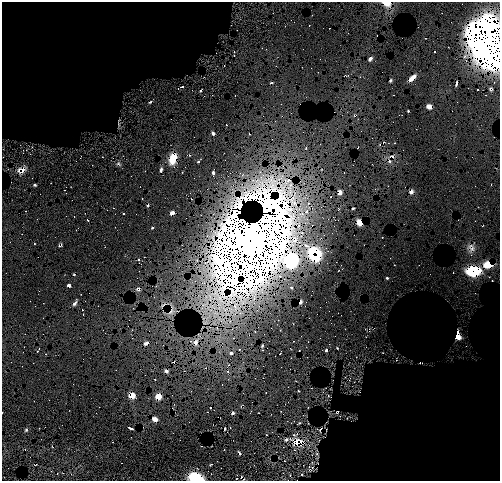
The plan:
Make a total mask (MTM.pl), which consists of:
final star mask () Mbad.pl
hand mask ()
Mhand.pl
OBJ mask ()
Mr38sP1.pl
UN mask ()
Mcent80.pl [80" radius circle unmasked]
Use this mask and run ellipse
to fit the galaxy [stop at SMA=1300px, step=0.2, start at 40px center
can vary, no limits on grad.rel.err. or flagged]
[note, to use ellipse, each time you have to be
sure you have an image M.fit (instead of .fits) and put the desired
mask into M.pl, and it will be used properly]
Use bmodel to generate a
model of the fit
Subtract this model off of the original image
Run OBJ mask on this image -- makes OBJmask #2
Make a new total mask (MTM2.pl), which consists of
final star mask
hand mask
OBJmask #2 (from above) -- this makes it an
iterative process
UN-masks:
Mun50.pl
|
MUN50.pl |
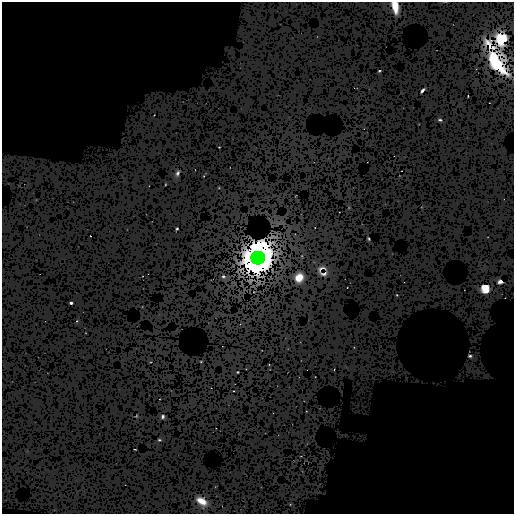
|

|
|
|
| Mun100.pl |
MUN100.pl
|
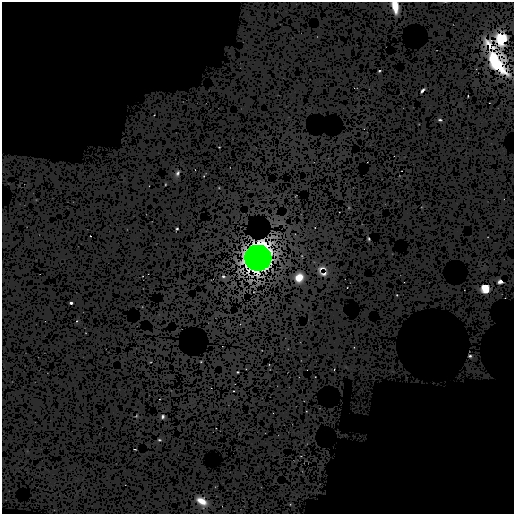
|
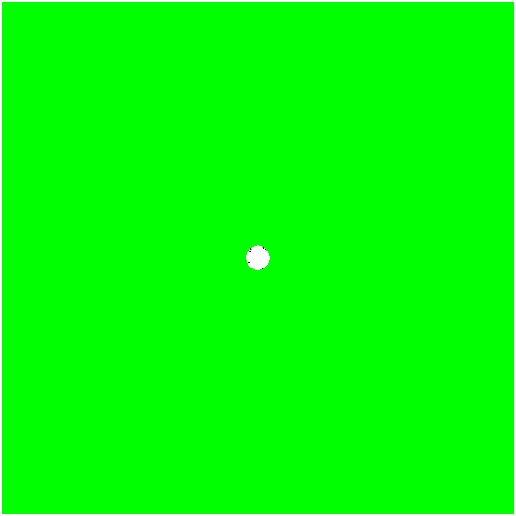
|
|
|
| Mun150.pl |
MUN150.pl |
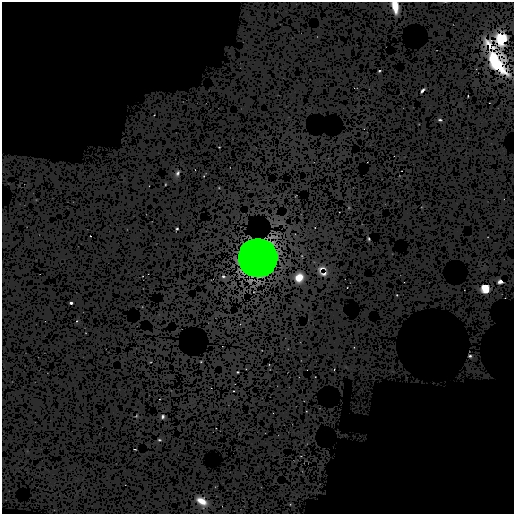
|
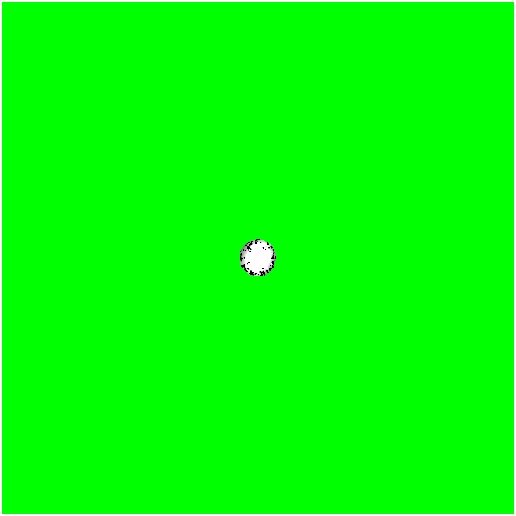
|
Real fit and artdata/extrapolated fit
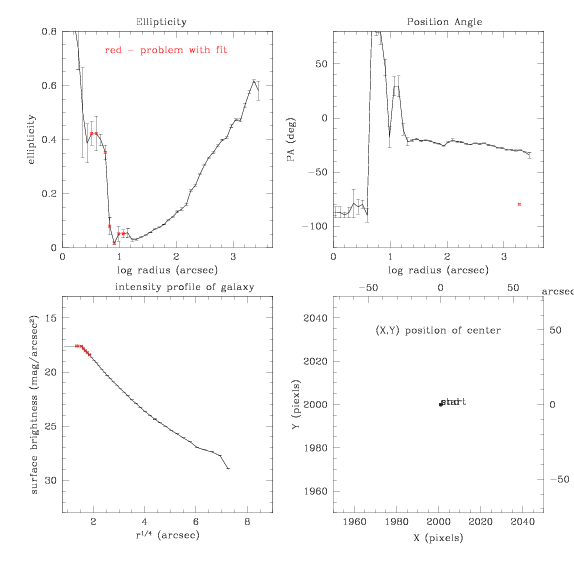

Comparing/seaming the real galaxy with the simulated:
Close-up
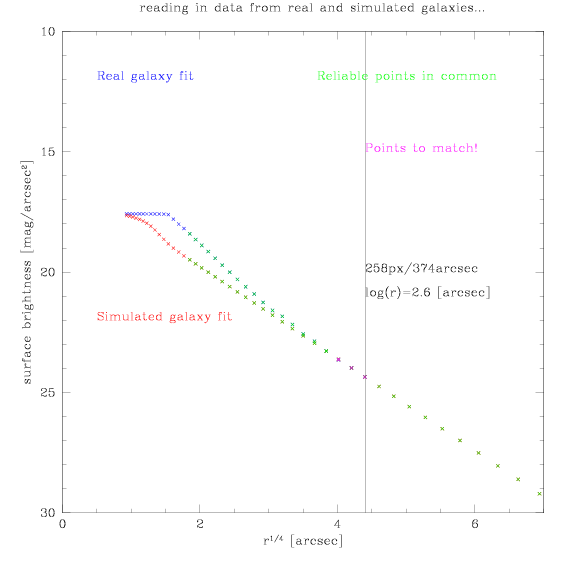
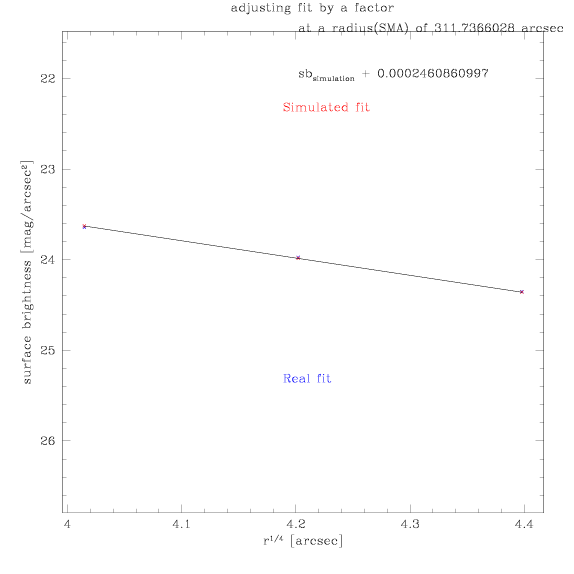
And the final subtraction:
[Msubtract.fits]
binned with rmed i=2, o=3 [Msubtract25.fits]
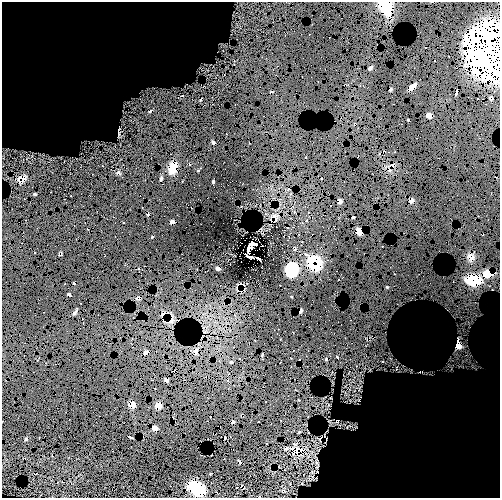
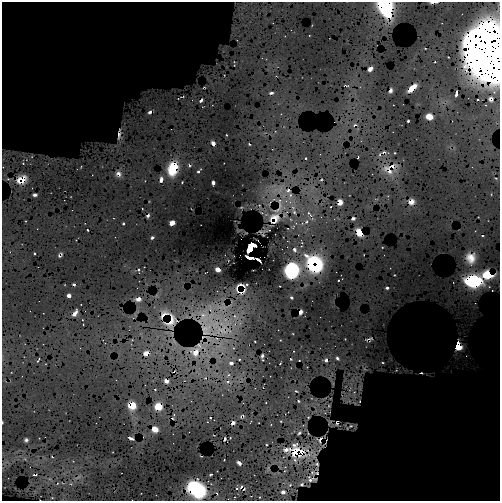
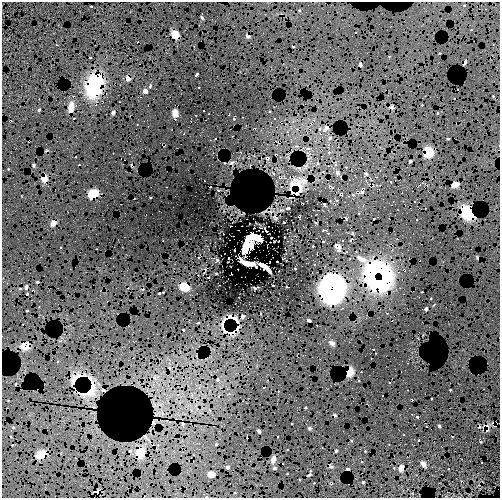
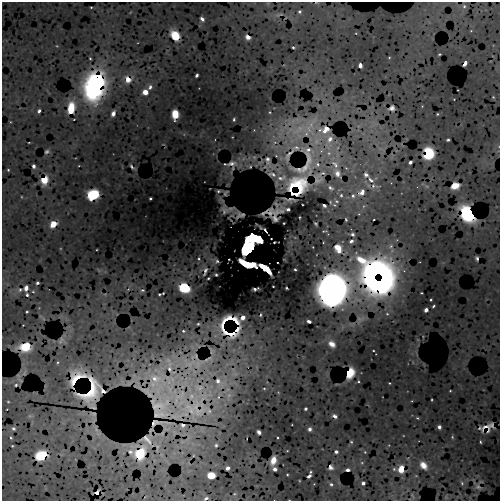

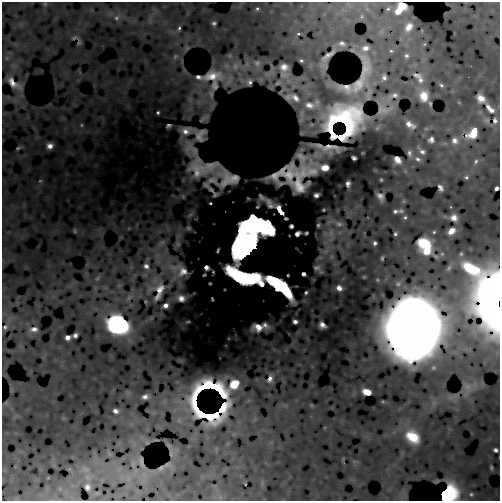
An example of a really good seam along the way:
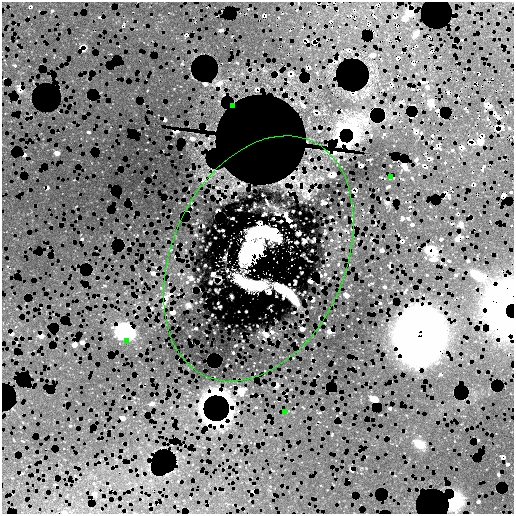
[Click the image to toggle between an image with the seam marked, and
without]

[Click the image to toggle between an image with the seam marked, and
without]
back to main Virgo page
























